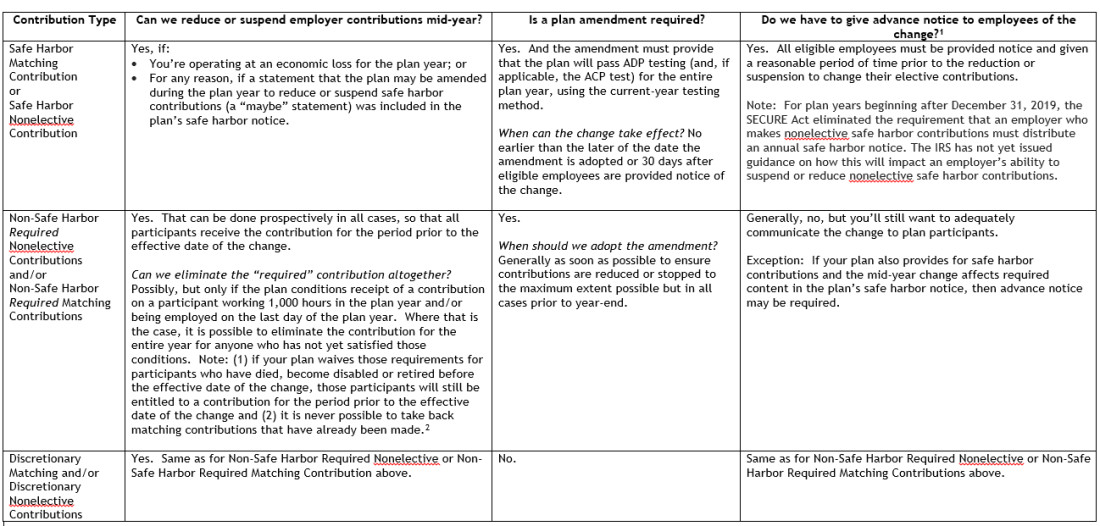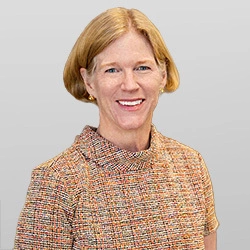COVID-19: Reducing or Suspending Employer Contributions to 401(k) Plans Mid-Year
In times of economic uncertainty, employers who typically make 401(k) matching or profit-sharing contributions often choose to reduce or suspend those contributions to conserve cash and save jobs. Figuring out whether and when in the year such changes can take effect and the steps necessary to make those changes, including whether a plan amendment or advance notice will be required, depends on the contribution type and whether the contribution is a safe harbor contribution, otherwise required by the plan document, or discretionary. Because those are plan-specific features, employers should consult with their plan’s third-party administrator and ERISA counsel for definitive guidance.
The safe harbor rules allow employers to make a specific, mandatory contribution to each plan participant that is immediately 100% vested. Following these rules keeps the plan from having to pass certain 401(k) nondiscrimination tests that would otherwise apply. There are two ways to satisfy the safe harbor rules. One is to make a profit-sharing (or “nonelective”) contribution of at least 3% of pay. The other way is to make a sufficiently large matching contribution. Where the safe harbor contribution is a matching contribution, participants are required to receive a safe harbor notice at least 30 days prior to start of each plan year. Sometimes this notice allows an employer to choose whether to make the safe harbor contribution and, where it does, the presence of this “maybe” language will determine whether matching contributions can be stopped mid-year absent the employer operating at an economic loss as explained below.
Sometimes plans that are not safe harbor plans nevertheless provide that a nonelective or matching contribution is “fixed” or required to be made. Alternatively, and more commonly, non-safe harbor plans may provide that any employer contributions are discretionary.
Once you confirm the type of contribution(s) called for under your specific plan, you may use the following chart to determine whether, when, and how those contributions may be reduced or suspended.

If you have any questions related to this alert, please do not hesitate to contact your regular Smith Anderson lawyer or any other member of our firm. Additionally, please visit and bookmark our firm’s Coronavirus (COVID-19) Business Resource Center which is continuously updated with useful materials and resources related to COVID-19. This tool has been made available to ensure that our clients and the broader business community stay informed on key issues that may impact their operations and to navigate the related business and legal issues during these challenging times.
[1] A plan amendment that makes a material change to the plan must be communicated in a summary of material modifications (“SMM”) if the summary plan description (“SPD”) is not reissued to describe the change. An SMM or updated SPD must be provided within 210 days after the end of the plan year in which the change is adopted. This means if you adopt an amendment to the plan in 2020, an SMM or updated SPD must be distributed by July 29, 2021 although it is generally preferable to provide the SMM or updated SPD as soon as possible.
[2] In our experience, many plans make discretionary matching contributions to eligible participants with each elective deferral without any last day or hours requirements such that changes to matching contributions can only be made prospectively. As a result, generally the sooner an amendment to discretionary matching contributions is adopted, the greater the potential savings.
Professionals
- Attorney
- Attorney
- Attorney




